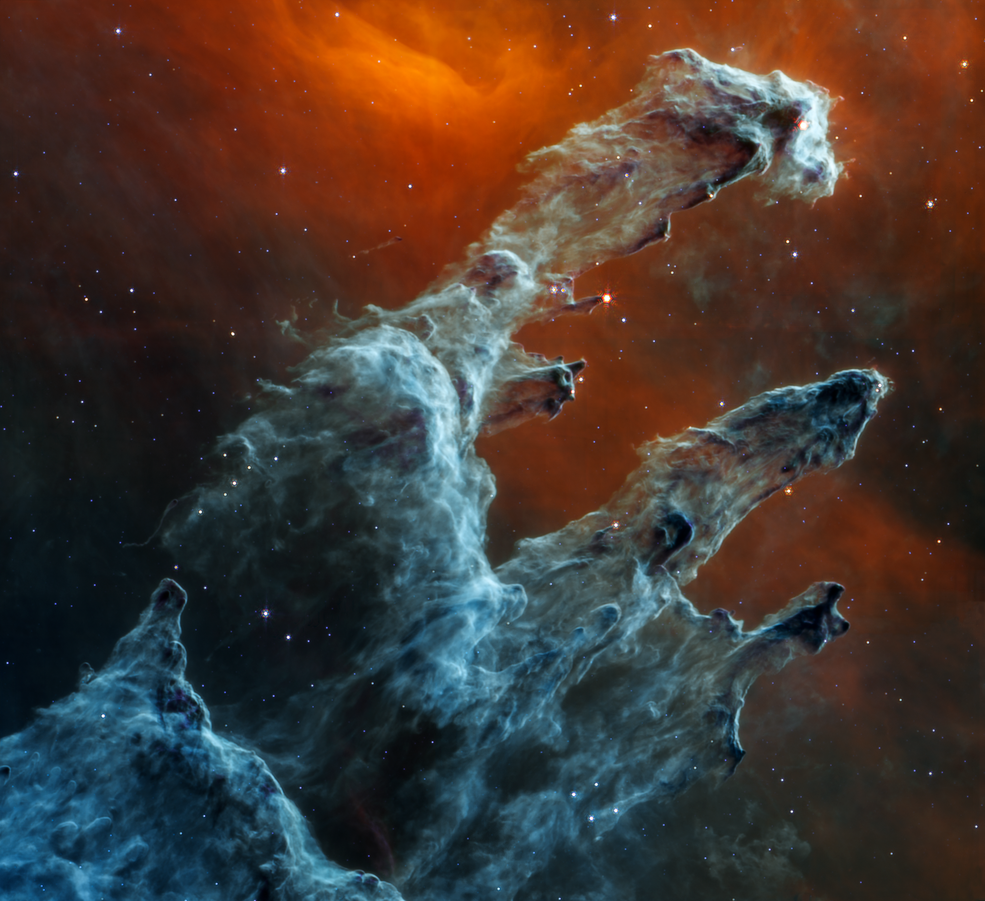James Webb Space Telescope's 'Haunting' Pillars of Creation image released
NASA's latest James Webb Space Telescope image reveals dust, debris and gas in spooky Pillars of Creation shot

The Pillars of Creation is the name given to the view of trunks of interstellar gas found within the vast Eagle Nebula, which are 6,500 light-years away from Earth. The scene was first photographed by the Hubble Space Telescope in 1995 and revisited in 2014, but NASA has just released a creepy, mid-infrared view of the Pillars from the James Webb Space Telescope.
"Trace the topmost pillar, landing on the bright red star jutting out of its lower edge like a broomstick," NASA says. "This star and its dusty shroud are larger than the size of our entire solar system."
We'd recommend that you download the full-resolution, uncompressed version of this spooky Pillars of Creation image so that you can delve into it in full detail.
Many people are calling this a chilling image, including NASA itself. One of the reasons that this image is haunting has to do with wavelengths of light, and what the James Webb Space Telescope can capture. It views scenes in mid-infrared light, and while this can show where dust is, it means the stars within the scene aren't at bright enough wavelengths to show up. Instead, all we do see are gigantic, looming pillars of gas and dust, only hinting at what's actually inside them.
If you want to keep up with the latest image releases, head to the James Webb Space Telescope gallery, where you can see all of Webb's first images and learn more about what they depict. NASA will be launching new images at least every other week.
We'll report on more James Webb Space Telescope images as they get released, from the angle of imaging than the subjects themselves.
If you're feeling inspired, why not try deep-space photography yourself, and check out the best telescopes for watching the night sky at home?
The best camera deals, reviews, product advice, and unmissable photography news, direct to your inbox!

Lauren is a writer, reviewer, and photographer with ten years of experience in the camera industry. She's the former Managing Editor of Digital Camera World, and previously served as Editor of Digital Photographer magazine, Technique editor for PhotoPlus: The Canon Magazine, and Deputy Editor of our sister publication, Digital Camera Magazine. An experienced journalist and freelance photographer, Lauren also has bylines at Tech Radar, Space.com, Canon Europe, PCGamesN, T3, Stuff, and British Airways' in-flight magazine. When she's not testing gear for DCW, she's probably in the kitchen testing yet another new curry recipe or walking in the Cotswolds with her Flat-coated Retriever.
